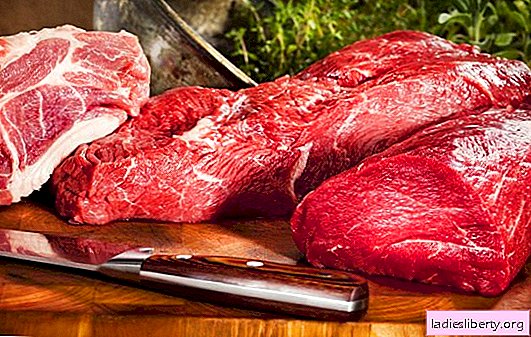
Before you make yourself a striped friend, you need to make sure that your friendship with him lasts as long as possible. According to statistics, cats live for about 14 years. But this is an average figure, and it does not mean anything. The life span of an animal is determined by such factors as diet, heredity, living conditions, care, and also luck.

How long do domestic cats live?
One of the most important factors determining a cat’s lifespan is whether she lives permanently indoors or has access to go out. The more time she spends at large, the greater the risk. Statistics show that domestic cats tend to live longer than their cousins in the wild.
Life expectancy increases in those animals that have been neutered.
This procedure prevents reproductive diseases, and such cats are less likely to go roving.
Big fluffy cats are cute and funny, but if the reason for this appearance is overweight, then each additional kilogram reduces the animal's lifespan by an average of 6 months.
Domestic cats can live from 14 to 20 years. The main disease causing premature death of pets is kidney disease.

How long do street cats live?
Human cruelty, poor nutrition, disease, weather and other animal attacks contribute to the death of cats in the wild.
There are no exact data on mortality in Russia, but according to veterinarians in the UK, the peak in mortality occurs in the first two years of life.
During this period, the animal is still accustomed to the conditions surrounding it.
The main causes of death are hunger and road accidents. Most street cats that survive this period die at the age of 7-8.
How long have purebred cats lived?
Mixed-breed cats live longer than purebred cats.
According to studies conducted by the Royal Royal Veterinary College of England, mestizos lived for about 14 years, while thoroughbred cats for about 12.5 years.
Siamese cats

Siam are prone to certain health problems, namely dental respiratory diseases, as well as heart diseases and certain types of cancer.
Siamese cats live on average 14.2 years.
Maine Coon

Animals of this breed have poor genetics. Cats suffer from hip dysplasia, hypertrophic cardiomyopathy and polycystic.
On average, Maine Coons live only 11 years.
Bengal cats

Bengals have two things in common with wild cats. Outward similarity and short life span.
They are considered the shortest living breed of domestic cats with an average life expectancy of only 7.3 years.
Numerous inherited health problems contribute to this, including polycystic kidney disease and susceptibility to certain infectious diseases.
Regdoll

Cats of this breed are prone to hypertrophic cardiomyopathy. Their average age of death does not exceed 10.1 years.
Himalayan cats
Himalayan cats came from breeding of Persian and Siamese breeds. From them they inherited some of the health problems.
The Himalayas are prone to polycystic kidney disease and respiratory problems.
Despite these problems, the Himalayas, according to veterinarians, live on average from 10 to 15 years, and according to some reports even more than 15 years.
Persian cats
Animals are subject to several inherited diseases, including polycystic kidney disease, hypertrophic cardiomyopathy, and problems with the bladder and liver.
However, the life expectancy of the Persians is almost the same as that of the thoroughbred counterparts.
These cute cats live an average of 14.1 years.
Sphinx

Like many purebred cats, sphinxes are prone to hypertrophic cardiomyopathy.
Some breeders and enthusiasts argue that the Sphinx’s average life expectancy is 20 years, while others are more cautious, estimating it from 10 to 15 years.
How to correlate a cat's age with a human
A one-year-old cat is physiologically similar to a 16-year-old man, and with the onset of two years - to a 21-year-old. For each subsequent year, the cat lives for about four human years.
Using this formula, we can calculate that a 10-year-old cat looks like a 53-year-old man, and a 12-year-old cat looks like a 61-year-old.
Stage of life
Feline life can be divided into six key stages. Identifying them can help you understand your pet's health / behavior problems.
Kitten (up to six months)
This is the best stage for socializing the pet to its environment. You need to introduce your cat to other pets in the house, members of your family, household items (TV, vacuum cleaner) and tame to the tray. A young animal easily remembers what you are trying to explain to him. At this time, the most active growth of the animal occurs throughout its entire life. The end of this period is the right time to castrate your pet and prevent unwanted consequences.
Junior (six months - two years)
Your pet will grow at its maximum size during this period of time and reach puberty.
It is important not to leave the animal for a long time alone in the room, even with a complete feeding and drinking feeder. You need to play with your pet, as this will teach him to communicate with people. You cannot scare him during games and hold him in your arms for a long time, as this can cause discomfort and even pain. Instead, use soft toys.
Cats often bite their owners during games. This may seem nice, but you need to remember that the pet will grow up soon, and if you do not wean the young animal at this time, then his bites and scratches will become stronger and more dangerous.
Young animal (three to six years old)
As the name of this phase implies, your cat will be in its prime during these three years. At this time, they are young and healthy, but it is important to ensure regular examinations by a veterinarian and vaccination. This will help prevent most diseases in the future.
Adult animal (seven to 10 years old)
At this age, your cat, by human standards, will be from forty to fifty years old.
You will notice that your pet becomes less active and begins to gain weight. It is important during this period to carefully monitor how much food he consumes in order to correctly calculate the amount of feed. If you are not sure whether he is overweight or are afraid to greatly reduce his diet, contact your veterinarian.
Elderly animal (11-14 years old)
Cats, having reached this age, begin to need mental stimulation. It is often necessary to change their environment: rearrange the basket-house, change toys and do not forget about communicating with them. Food puzzles are a great way to cheer up a pet: frequent changes in feeding places. To eat the animal will move more. It will also help in the fight against overweight.
Elderly animal (15 years and older)
Some cats can reach this age without signs of aging, but most become lethargic and constantly dozing. For geriatric cats, you need to carefully monitor and record any changes in their behavior. It is necessary to distinguish normal senile features from pathological ones. Here are the main features of an aging cat.
- Functional changes: the cat is less mobile, it has reduced vision, smell and hearing.
- Behavioral changes: the sleep cycle changes, the tone of the pet's voice, stress resistance decreases.
- Changes in appearance: pupils become cloudy, skin elasticity decreases, nails thicken and teeth turn yellow.
If you notice something unusual, it is best to make an appointment with your veterinarian. Of particular danger is the occurrence of cognitive impairment. They harm both the animal itself and others. Here are the main signs of how they appear.
- The pet may get lost in familiar places, stop recognizing family members.
- He is constantly annoyed and display aggression.
- The animal ignores the litter box and relieves the need throughout the house.
- The cat is constantly alarmed, trembling, not interested in games.
When a doctor confirms a cognitive impairment, you need to find out the exact diagnosis. Taking medication will extend the life of the animal.
We are not always able to extend the life of a pet, but we can provide him a comfortable life. The main thing - do not forget about it, undergo veterinarian examinations, vaccinations and proper feeding. Constant care will make your pet the happiest creature in the world.











